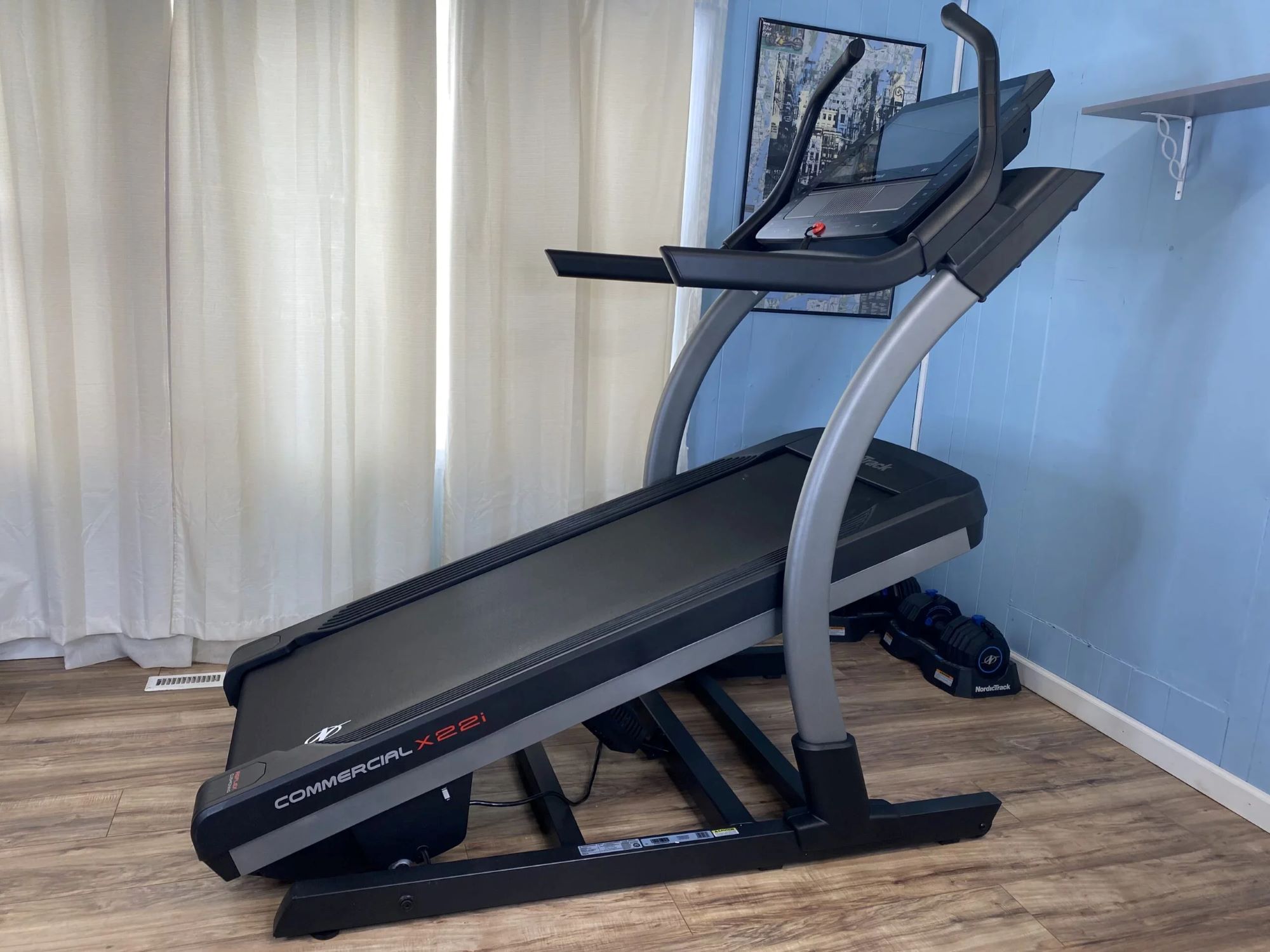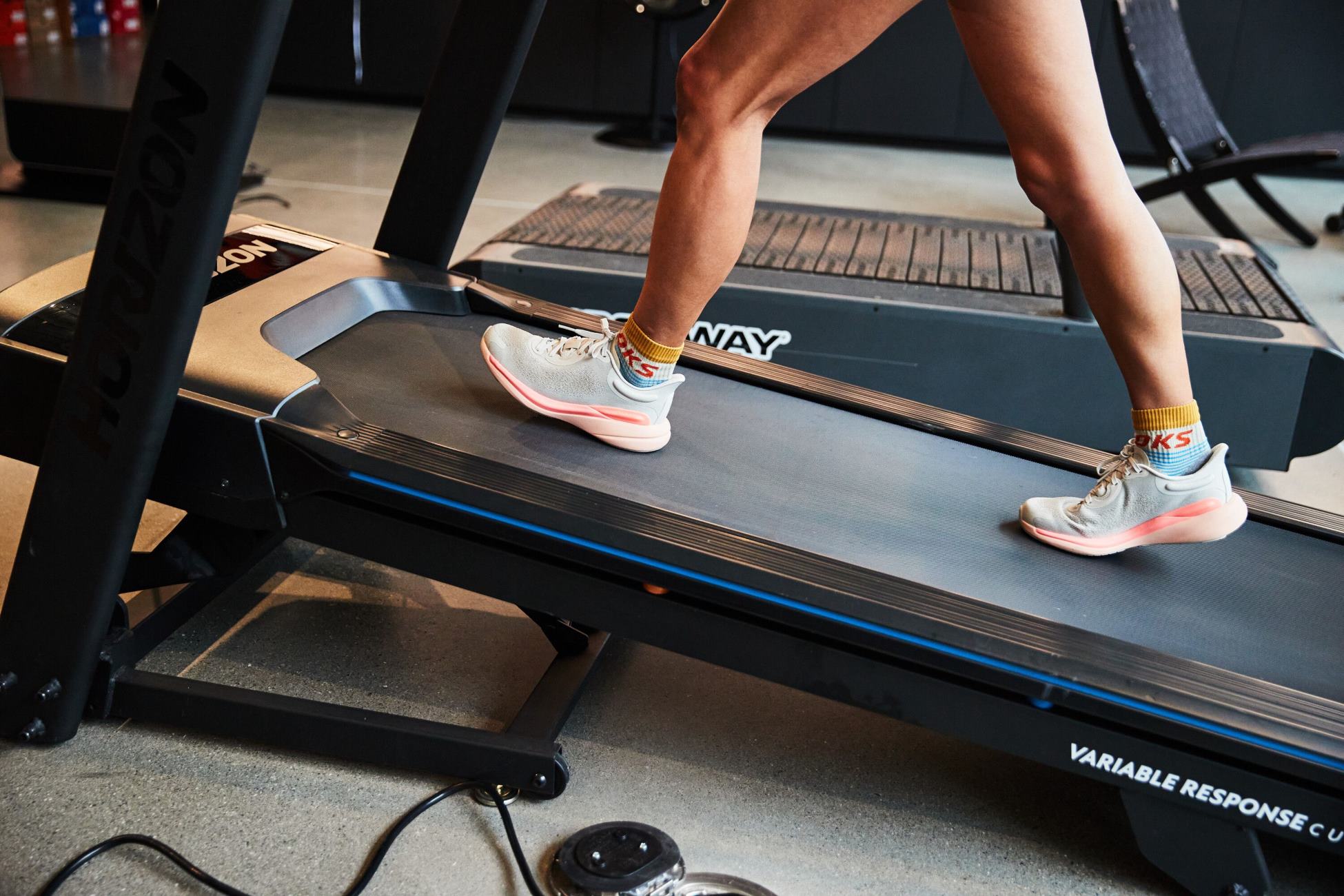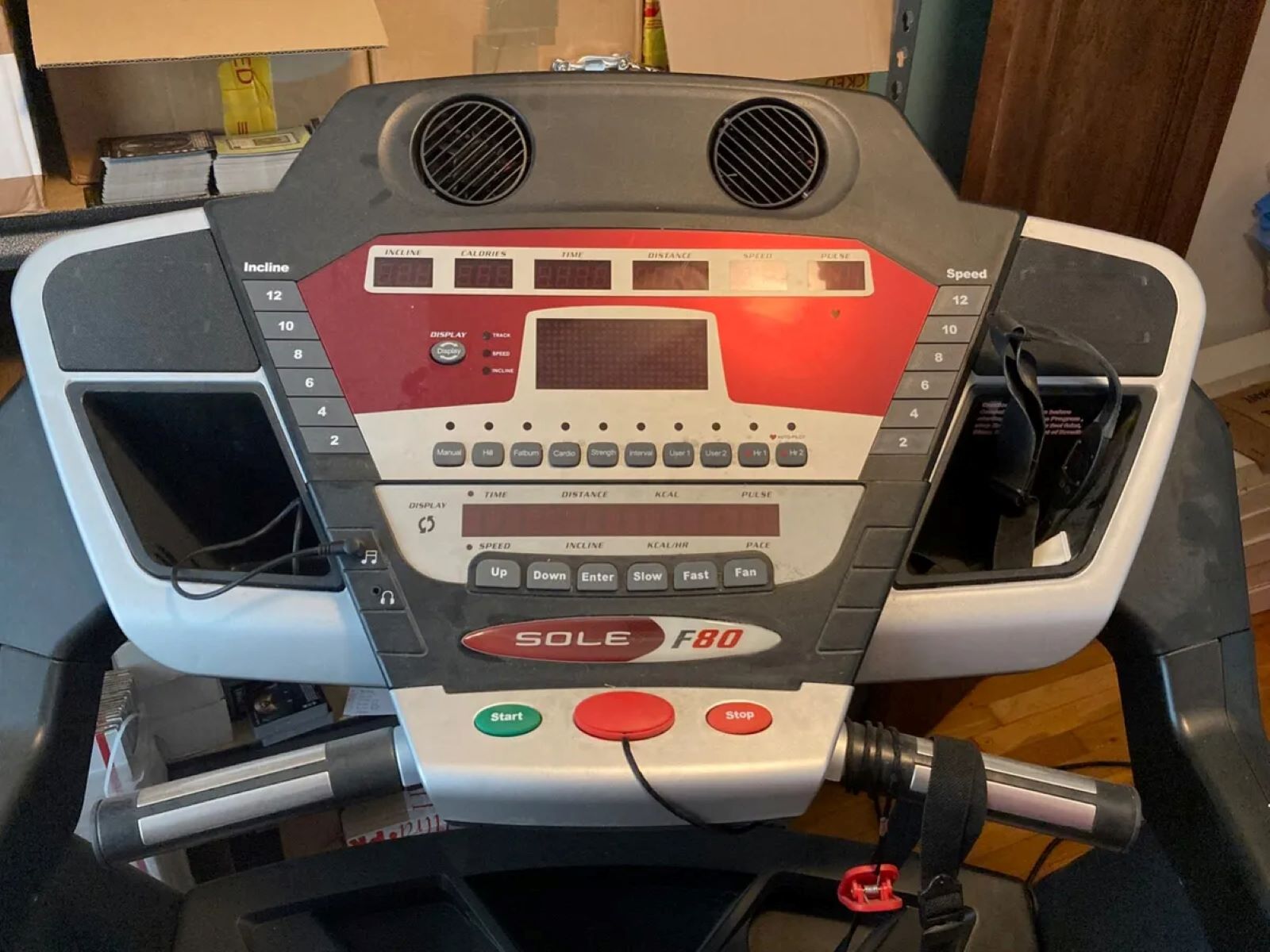

Featured
How To Reset A Treadmill
Modified: January 2, 2024
Learn how to reset a treadmill with our featured guide, ensuring you get the best performance from your workout equipment.
Introduction
Resetting a treadmill is a common practice that many treadmill owners need to do at some point. Whether you’re experiencing technical issues, performance discrepancies, or simply want to refresh your treadmill’s settings, a reset can often solve these problems. This article will guide you through the process of resetting a treadmill, ensuring that you do it correctly and safely.
A treadmill is a valuable fitness equipment investment, and just like any other machine, it can encounter glitches or require adjustments over time. Resetting a treadmill can help resolve issues such as unresponsiveness, incorrect display readings, or erratic performance. It essentially restores the treadmill to its default settings, giving you a fresh start and potentially fixing various problems.
However, before we delve into the reset process, it’s important to note that not all issues can be resolved by a simple reset. If your treadmill is under warranty, it’s advisable to contact the manufacturer or a professional technician for assistance. They can provide you with specific troubleshooting steps or schedule a repair appointment if necessary.
In this article, we will provide you with step-by-step instructions on how to reset your treadmill properly. It is crucial to follow the guidelines carefully to avoid any potential damage to your treadmill or risk voiding the warranty. Additionally, we will also discuss some precautions you should take before initiating the reset process to ensure your safety and protect the longevity of your treadmill.
So, if you’re ready to get your treadmill back on track, let’s jump into the details of how to effectively and safely reset your treadmill.
Understanding the Need for Resetting a Treadmill
Owning a treadmill comes with its fair share of challenges, and occasionally, you may find yourself needing to reset it. But why is resetting a treadmill necessary? By understanding the reasons behind the need for a reset, you can better appreciate the benefits it brings.
One common reason for resetting a treadmill is to resolve technical issues. Like any electronic device, treadmills can encounter glitches or malfunctions. These issues can manifest in various ways, such as sudden shutdowns, unresponsive controls, or inaccurate display readings. Resetting the treadmill can often help to rectify these problems and restore it to its normal functioning state.
In addition to technical issues, performance discrepancies can also prompt the need for a reset. Over time, your treadmill’s performance may start to decline due to a variety of factors. This can include belt slippage, speed inconsistencies, or uneven incline adjustments. Resetting the treadmill allows you to recalibrate these settings, resulting in smoother and more accurate performance during your workouts.
Furthermore, a reset can come in handy for those who have recently purchased a used treadmill. When buying a second-hand treadmill, you may find that it still contains the previous owner’s settings, preferences, or workout programs. Resetting the treadmill ensures that you start with a clean slate, allowing you to personalize the settings to your own preferences.
Additionally, a reset can also provide psychological benefits. A treadmill that has been reset feels like a fresh start, boosting motivation and creating a sense of novelty. It can reignite your enthusiasm for using the treadmill and inject new energy into your fitness routine.
In summary, understanding the need for resetting a treadmill is crucial for maintaining its optimal performance. Whether you’re experiencing technical issues, performance discrepancies, or simply want to personalize your treadmill, a reset can address these concerns effectively. By resetting your treadmill, you can ensure that it’s running smoothly, accurately tracking your progress, and providing a positive workout experience.
Precautions before Resetting a Treadmill
Before you proceed with resetting your treadmill, there are a few important precautions to keep in mind. These precautions will help ensure your safety and protect your treadmill from any potential damage during the reset process.
Firstly, it’s crucial to consult your treadmill’s user manual. Every treadmill model is different, and the reset process may vary. The user manual will provide specific instructions tailored for your treadmill, including the location of the reset button or the sequence of buttons you need to press. Familiarize yourself with these instructions before attempting a reset to avoid any confusion or mistakes.
Next, power off your treadmill and unplug it from the electrical outlet. This step is essential to prevent any electrical shocks or accidents while manipulating the internal components. Wait for a few minutes to allow any residual electricity to discharge before proceeding with the reset.
Ensure that you are in a safe and well-lit environment. Make sure the area around the treadmill is clear of any obstacles or potential tripping hazards. This will minimize the risk of accidents or injuries while performing the reset. If possible, have a friend or family member nearby as an extra precautionary measure.
If you have any doubts or concerns about resetting your treadmill, it’s always advisable to seek professional assistance. Contacting the manufacturer’s customer support or consulting a treadmill technician can provide you with expert guidance, ensuring that you don’t inadvertently cause any damage to your treadmill.
Finally, keep in mind that resetting a treadmill may erase any custom settings, programs, or workout data that you have stored. If you want to preserve any personalized settings, make a note of them before proceeding with the reset. This will allow you to reconfigure your treadmill to your desired settings once the reset process is complete.
By considering these precautions before resetting your treadmill, you can ensure a smooth and safe reset experience. Taking the necessary steps to protect your treadmill and yourself will help maintain its longevity and ensure that your workouts continue without any interruptions.
Steps to Reset a Treadmill
Resetting a treadmill involves a series of specific steps that may vary depending on the make and model of your treadmill. However, here are some general steps to guide you through the reset process:
- Start by powering off your treadmill and unplugging it from the electrical outlet. This step is crucial to ensure your safety and prevent any electrical accidents.
- Wait for a few minutes to give your treadmill time to discharge any residual electricity. This will help reset the internal system.
- Locate the reset button or the combination of buttons you need to press. Consult your treadmill’s user manual for specific instructions on how to perform a reset. The reset button is usually located on the console or near the power switch.
- Press and hold the reset button or the appropriate combination of buttons for a few seconds. The exact duration may differ depending on your treadmill model. Some treadmills may require entering a specific code or sequence of buttons.
- Release the reset button or buttons. The treadmill’s display or indicator lights may flash momentarily, indicating that the reset process is successfully initiated.
- Plug your treadmill back into the electrical outlet and power it on. Wait for the treadmill to fully boot up and display the default settings.
- Adjust the settings to your preference, including speed, incline, and other customizations. Refer to your user manual for guidance on accessing and modifying the various settings on your treadmill.
It’s important to note that the exact steps and button combinations may vary for different treadmill models. Always refer to your treadmill’s user manual for accurate instructions tailored to your specific treadmill. If you are unsure or encounter any difficulties, contacting the manufacturer’s customer support or consulting a treadmill technician can provide you with further assistance.
By following these steps, you can successfully reset your treadmill and start fresh with default settings. Resetting your treadmill can help resolve various technical issues, restore performance, and ensure that your workouts are smooth and enjoyable.
Troubleshooting Common Issues after Resetting
After resetting your treadmill, it’s possible that you may encounter some common issues. Understanding these issues and knowing how to troubleshoot them can help you quickly get your treadmill back up and running smoothly. Here are a few common issues and their potential solutions:
- Unresponsive controls: If the controls on your treadmill are not responding after the reset, check the connection between the console and the control board. Ensure that the connectors are securely attached. If the issue persists, consult the user manual or contact customer support for further assistance.
- Inaccurate speed or incline readings: If you notice that your treadmill displays inaccurate speed or incline readings after the reset, calibrate these settings manually. Most treadmills have a calibration process outlined in the user manual. Follow the instructions carefully to adjust the speed and incline measurements to their proper levels.
- Belt slipping or uneven: If you experience issues with the treadmill belt slipping or running unevenly, it may require realignment. Consult the user manual for instructions on how to adjust the belt tension or alignment. Proper belt tension and alignment are crucial for a smooth and safe workout.
- Noise or squeaking: If your treadmill is making unusual noises or squeaking sounds after the reset, it may need lubrication. Refer to the user manual for guidance on which lubricant to use and how to apply it to the treadmill’s moving parts. Regular lubrication can help reduce friction and prolong the lifespan of your treadmill.
- Error codes or flashing lights: If you encounter error codes or flashing lights on your treadmill’s display after the reset, consult the user manual to identify the specific error code or message. It will provide you with information on how to troubleshoot the issue or may direct you to contact customer support for further assistance.
If you have tried troubleshooting these common issues and are still experiencing problems with your treadmill, it’s recommended to contact the manufacturer’s customer support or seek professional assistance. They can provide you with tailored troubleshooting steps or arrange for a technician to diagnose and repair the issue.
Remember, the reset process is designed to address general issues and restore your treadmill to its default settings. However, there may be underlying issues that require further attention. By knowing how to troubleshoot common issues and seeking assistance when needed, you can ensure that your treadmill is functioning optimally and providing you with effective workouts.
Conclusion
Resetting a treadmill is a valuable tool in maintaining its optimal performance and addressing common issues that may arise over time. By understanding the need for resetting, taking necessary precautions, following the correct steps, and troubleshooting potential problems, you can ensure a smooth and successful reset experience.
Resetting your treadmill can help resolve technical issues, refresh performance, and provide a fresh start for your fitness routine. It allows you to recalibrate settings, personalize preferences, and restore your treadmill to its default state.
However, it’s important to note that not all issues can be solved by a reset, and seeking professional assistance may be necessary in some cases. If your treadmill is still under warranty, contacting the manufacturer or a qualified technician can provide you with specific troubleshooting steps or arrange for a repair if needed.
Remember to always refer to your treadmill’s user manual for accurate instructions tailored to your specific model. Taking the appropriate precautions, such as powering off the treadmill and practicing safety measures, can protect both yourself and the treadmill during the reset process.
By following these guidelines, you can confidently reset your treadmill and enjoy smooth, reliable performance for your workouts. Whether you’re troubleshooting technical issues, refreshing settings, or starting with a used treadmill, a reset can bring new life to your fitness routine and help you achieve your goals.
So, when you encounter any issues or want to refresh your treadmill, don’t hesitate to perform a reset. It’s a simple yet effective solution that can make a world of difference in your treadmill’s performance and your overall fitness experience.









